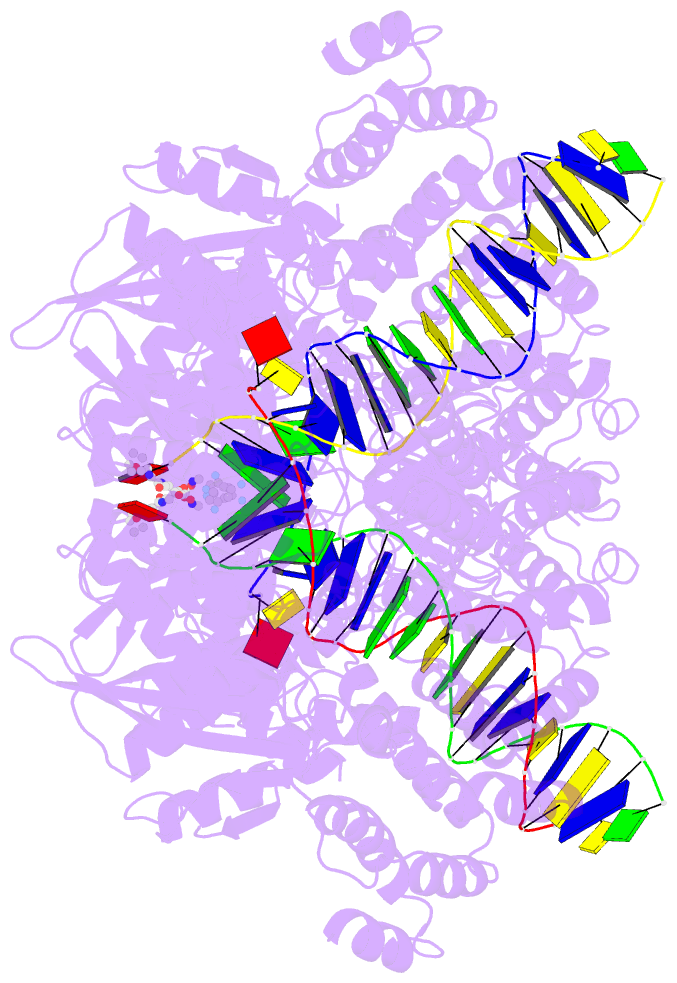Summary information and primary citation
- PDB-id
- 7ouh; DSSR-derived features in text and JSON formats
- Class
- viral protein
- Method
- cryo-EM (3.5 Å)
- Summary
- Structure of the stlv intasome:b56 complex bound to the strand-transfer inhibitor bictegravir
- Reference
- Barski MS, Vanzo T, Zhao XZ, Smith SJ, Ballandras-Colas A, Cronin NB, Pye VE, Hughes SH, Burke Jr TR, Cherepanov P, Maertens GN (2021): "Structural basis for the inhibition of HTLV-1 integration inferred from cryo-EM deltaretroviral intasome structures." Nat Commun, 12, 4996. doi: 10.1038/s41467-021-25284-1.
- Abstract
- Between 10 and 20 million people worldwide are infected with the human T-cell lymphotropic virus type 1 (HTLV-1). Despite causing life-threatening pathologies there is no therapeutic regimen for this deltaretrovirus. Here, we screened a library of integrase strand transfer inhibitor (INSTI) candidates built around several chemical scaffolds to determine their effectiveness in limiting HTLV-1 infection. Naphthyridines with substituents in position 6 emerged as the most potent compounds against HTLV-1, with XZ450 having highest efficacy in vitro. Using single-particle cryo-electron microscopy we visualised XZ450 as well as the clinical HIV-1 INSTIs raltegravir and bictegravir bound to the active site of the deltaretroviral intasome. The structures reveal subtle differences in the coordination environment of the Mg2+ ion pair involved in the interaction with the INSTIs. Our results elucidate the binding of INSTIs to the HTLV-1 intasome and support their use for pre-exposure prophylaxis and possibly future treatment of HTLV-1 infection.





